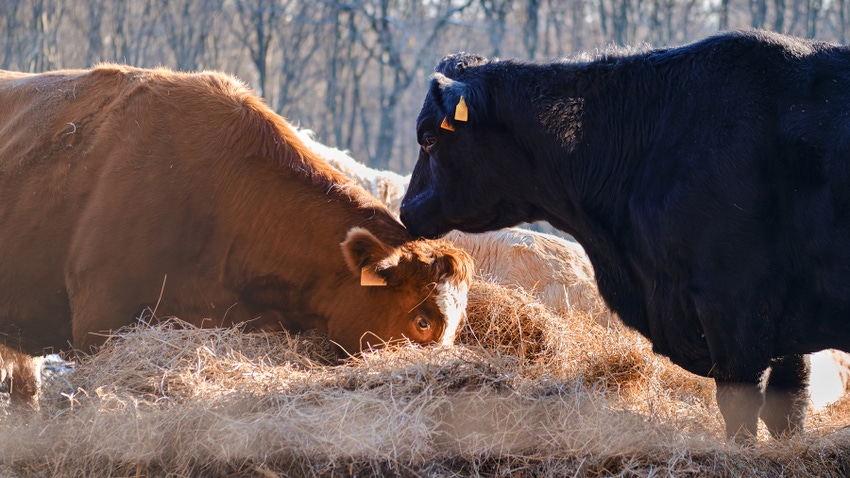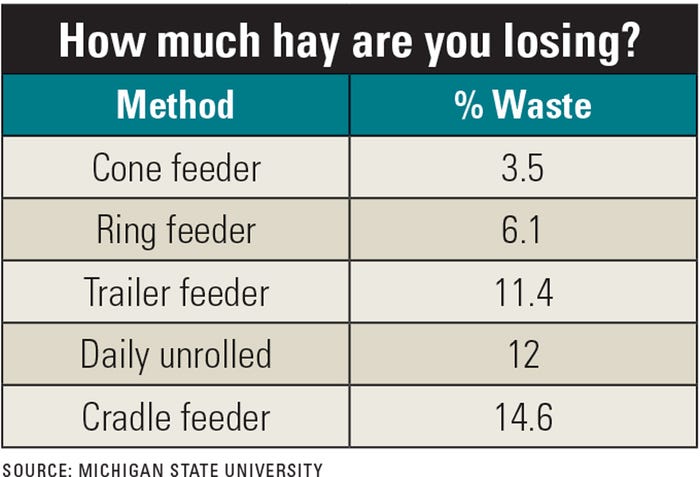April 14, 2023

Poor storage and feeding methods lead to only a portion of hay reaching the cow’s mouth, says Andy McCorkill, University of Missouri Extension livestock specialist.
As much as 40% of hay goes to waste when producers feed three or more days’ worth of hay at a time, according to studies from the University of Missouri and Michigan State University. McCorkill says cows do not need access to hay all the time. Rather, farmers should practice more frequent feedings and limit cow access to forage.
Best feeding practices
There are many ways farmers can offer hay to cattle. Each one provides a different level of cow access and comes with its own waste issues.
Michigan State University research shows the following:

McCorkill say hay quality also plays a crucial role in the amount of waste. When higher-quality, more palatable hay is offered, the herd will clean it up better regardless of the type of hay ring used, he notes.
A Missouri trial suggested there was no statistical difference in hay waste between the varying bale ring types when alfalfa baleage was the roughage used.
Maintaining hay quality comes down to proper storage.
Guard the bale
McCorkill says a hay barn to protect your investment is the best bet, but if you can’t put hay under a roof, pay strict attention to outside storage practices that expose bales to sunlight and precipitation. Here are McCorkill’s recommendations:
Run hay bales in rows in a north-south orientation on a sloped site that allows drainage.
Space bales 3-plus feet apart for better ventilation and easier access with a tractor.
Butt bales end to end.
Place bales on gravel or elevate them on pallets or old tires to reduce moisture wicking from the ground. Bales stored on damp soil flatten and squat closer to the ground, exposing more of the bale to weathering and spoilage.
But there is one other factor farmers need to know before they put up bales — size.
Large vs. small bales
MU Extension livestock specialist Jim Humphrey says bale size matters when it comes to hay loss due to poor quality.
Larger-diameter bales have less loss. Smaller bales have about twice as much exposed surface for the same amount of hay.
In a 5-foot bale, more than 30% of the bale is in the outer 6 inches, Humphrey explains, the part most apt to spoil, he notes. More than 26% is in the next 6 inches. Just over 20% is in the well-protected 12-inch center core.
Ultimately, McCorkill says cattle producers should focus on reducing hay waste in their operation to “make sure your high-value hay gets in the mouth of an animal.”
Source: University of Missouri Extension
Read more about:
BeefYou May Also Like




